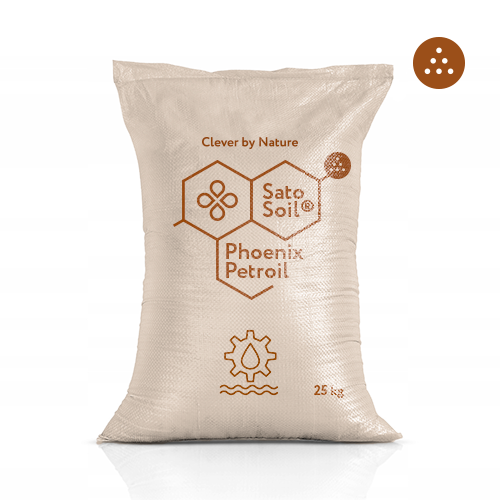There is no need to explain how much a person is dependent on water. City sewage, industrial effluents, oil spills, lenses of polluted groundwater under objects of accumulated harm – cattle burial grounds, storage facilities for caustic chemicals or fuels and lubricants – these are real environmental ulcers of nature, characteristic of any industrialized country.
Polluted water bodies
Therefore, the problem of rehabilitation is approached in a complex manner, based on the groups of pollutants and proven means for their physical and chemical decomposition into less toxic groups, or vice versa, for the formation of stable and weakly mobile complexes.
Elimination of environmental damage to nature is unthinkable without the sanitation of water bodies. The installation of permeable reaction barriers (PRB) refers to physical and chemical methods for treating groundwater, subsurface polluted flows, and spills of hazardous substances.



Blocking filtration barriers localize, isolate and counteract pollutants. Neutralizing reagents are introduced inside the PRB action loop, for example, zero-valence metals, chelates, sorbents, functional microorganisms, etc. The PRB can be of different configurations and include additional elements – trapping pits and ditches, discharge pipelines or wells, system of gateways with intermediate zones with different reactors.



Rain and melt waters are of particular danger, as well as atmospheric transfer of gas and dust emissions into aquifers. Therefore, it’s necessary to systematically monitor traces of migration of highly toxic compounds.
PRB from peat-sapropel mixtures Sato® Barrier effectively neutralizes compounds of heavy metals and radionuclides, is radiation and chemically stable, allows combination with defoamers, iron-containing granules to trap chlorine pollutants and with other functional reagents.
TYPES OF CONTAMINATED OBJECTS | POSSIBLE SOLUTIONS |
|---|---|
City waste water. Wastewater from industrial production. | SatoHum® Barrier + SatoSoil® pHoenix + sorbents/reagents
System of funnels and sluices.
Increasing soil fertility.
Perimeter treatment of the landfill body. |
Seepage of leachates around a water body. | SatoHum® Barrier + Binders + SatoSoil® pHoenix
Binding into insoluble complexes of pollutants.
Prevention of evaporation into the atmosphere.
Thermoregulation of the upper layer. |
Filtration of contaminants into groundwater lenses. | SatoHum® Barrier + Binders + SatoSoil® pHoenix
Binding into insoluble complexes of pollutants.
Splitting of pollutants into less toxic elements. |
Flooded and waterlogged areas with disturbed biocenosis. Flooded sludge reservoirs with silt sediments. | SatoHum® Barrier + beneficial microorganisms + SatoSoil® pHoenix + fascines
Slowdown of biocenosis degradation.
Coastline nutrition.
Prevention of filtration into lens layers.
Increased water-air exchange. |
Dehumidified shores. | SatoHum® Barrier + SatoSoil® + BioGrow®
Targeted soils fertilizing.
Biostimulation of plant growth. |
Groundwater under landfills. Water treatment sludge. | SatoHum® Barrier + SatoSoil® pHoenix
Decomposition or complexation of toxic substances.
Strengthening of physical and chemical processes. |
Oil spills and filtration of fuels and lubricants into aquifers and lens formations. | SatoHum Barrier® + SatoSoil® pHoenix Petroil + ultrasonic cavitation + fascines
Soil salinity reduction.
Cleavage of toxic compounds into low-toxic groups.
Stabilization of acidified lenses of petroleum products.
Improving the drainage functions of the reservoir. |
There is no need to explain how much a person is dependent on water. City sewage, industrial effluents, oil spills, lenses of polluted groundwater under objects of accumulated harm – cattle burial grounds, storage facilities for caustic chemicals or fuels and lubricants – these are real environmental ulcers of nature, characteristic of any industrialized country.
Therefore, the problem of rehabilitation is approached in a complex manner, based on the groups of pollutants and proven means for their physical and chemical decomposition into less toxic groups, or vice versa, for the formation of stable and weakly mobile complexes.
Elimination of environmental damage to nature is unthinkable without the sanitation of water bodies. The installation of permeable reaction barriers (PRB) refers to physical and chemical methods for treating groundwater, subsurface polluted flows, and spills of hazardous substances.



Blocking filtration barriers localize, isolate and counteract pollutants. Neutralizing reagents are introduced inside the PRB action loop, for example, zero-valence metals, chelates, sorbents, functional microorganisms, etc. The PRB can be of different configurations and include additional elements – trapping pits and ditches, discharge pipelines or wells, system of gateways with intermediate zones with different reactors.



Rain and melt waters are of particular danger, as well as atmospheric transfer of gas and dust emissions into aquifers. Therefore, it’s necessary to systematically monitor traces of migration of highly toxic compounds.
PRB from peat-sapropel mixtures Sato® Barrier effectively neutralizes compounds of heavy metals and radionuclides, is radiation and chemically stable, allows combination with defoamers, iron-containing granules to trap chlorine pollutants and with other functional reagents.
TYPES OF CONTAMINATED OBJECTS | POSSIBLE SOLUTIONS |
|---|---|
City waste water. Wastewater from industrial production. | SatoHum® Barrier + SatoSoil® pHoenix + sorbents/reagents
System of funnels and sluices.
Increasing soil fertility.
Perimeter treatment of the landfill body. |
Seepage of leachates around a water body. | SatoHum® Barrier + Binders + SatoSoil® pHoenix
Binding into insoluble complexes of pollutants.
Prevention of evaporation into the atmosphere.
Thermoregulation of the upper layer. |
Filtration of contaminants into groundwater lenses. | SatoHum® Barrier + Binders + SatoSoil® pHoenix
Binding into insoluble complexes of pollutants.
Splitting of pollutants into less toxic elements. |
Flooded and waterlogged areas with disturbed biocenosis. Flooded sludge reservoirs with silt sediments. | SatoHum® Barrier + beneficial microorganisms + SatoSoil® pHoenix + fascines
Slowdown of biocenosis degradation.
Coastline nutrition.
Prevention of filtration into lens layers.
Increased water-air exchange. |
Dehumidified shores. | SatoHum® Barrier + SatoSoil® + BioGrow®
Targeted soils fertilizing.
Biostimulation of plant growth. |
Groundwater under landfills. Water treatment sludge. | SatoHum® Barrier + SatoSoil® pHoenix
Decomposition or complexation of toxic substances.
Strengthening of physical and chemical processes. |
Oil spills and filtration of fuels and lubricants into aquifers and lens formations. | SatoHum Barrier® + SatoSoil® pHoenix Petroil + ultrasonic cavitation + fascines
Soil salinity reduction.
Cleavage of toxic compounds into low-toxic groups.
Stabilization of acidified lenses of petroleum products.
Improving the drainage functions of the reservoir. |









